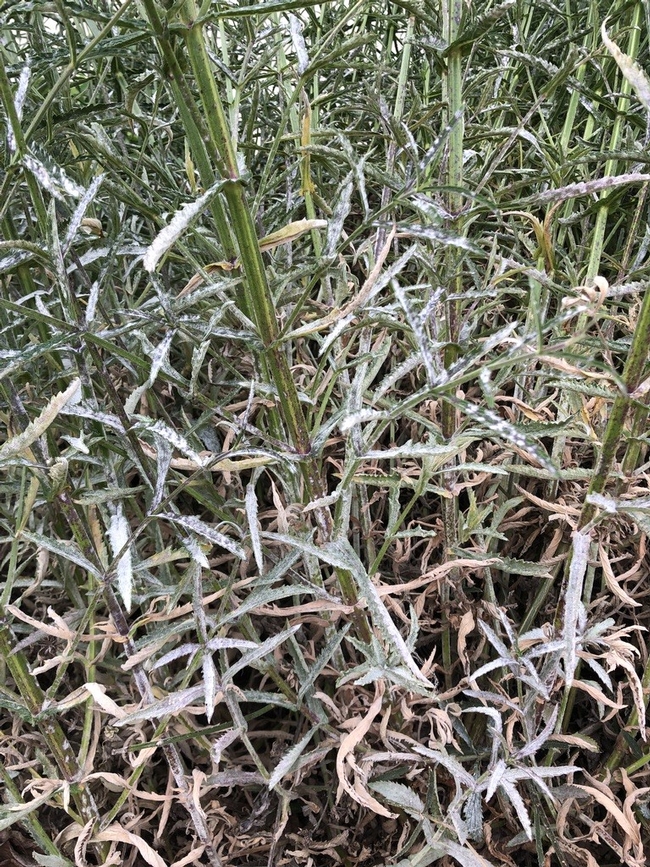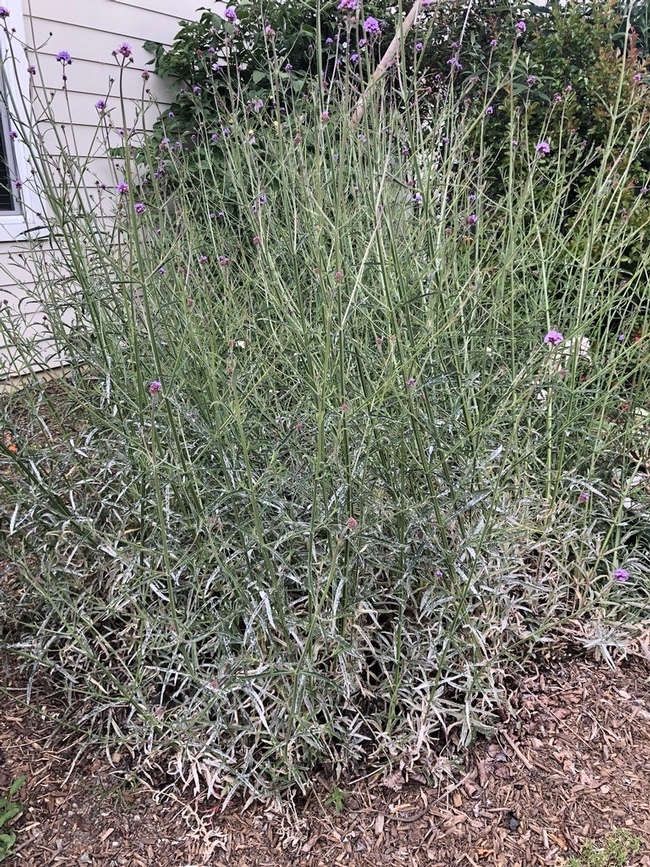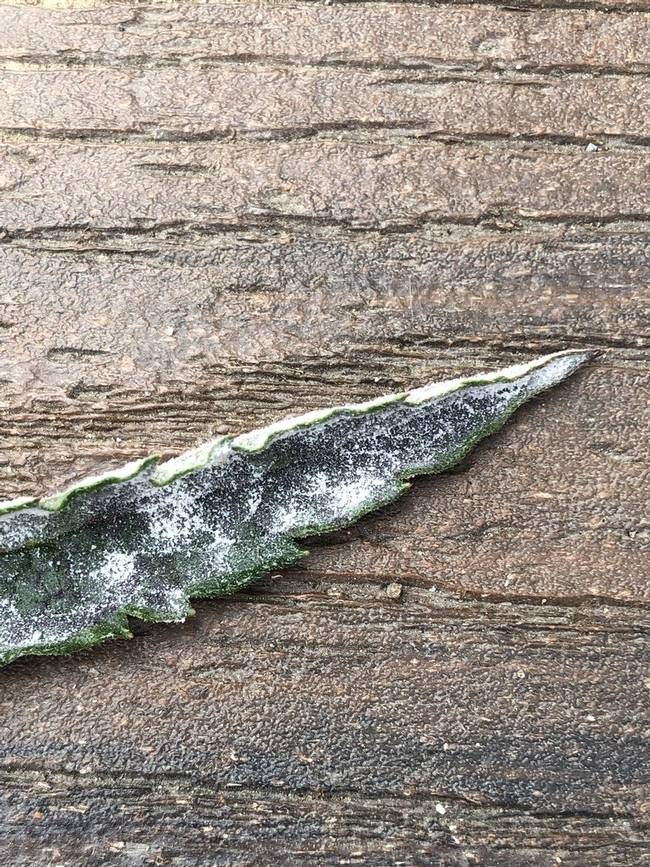- Author: Erin Mahaney
I love my easy-to-grow, leggy Verbena bonariensis with its clusters of butterfly-attracting purple flowers, but for the second year in a row, it has been affected by powdery mildew. Powdery mildew is a common fungal disease that is favored by wind and dry conditions. The term powdery mildew refers to the fungal pathogens as well as the disease.
Powdery mildew appears as – no surprise - white, powdery patches on leaf surfaces and stems. Powdery mildew on verbena can also result in a purpling and chlorosis (yellowing) of the upper leaf surface. The lower leaves generally are the first to show symptoms.
Powdery mildew fungi are highly specialized in that different fungi cause disease on different plants, with fungi favoring plants in the same family or only one species of plant.
According to the University of California Integrated Pest Management Program (UC IPM), the wind carries powdery mildew spores to new hosts. Moderate temperatures of 60° to 80°F and dry, shady conditions generally are the most favorable for powdery mildew development.
Not surprisingly, prevention is the best method of control. This means avoiding the most susceptible cultivars, placing plants in full sun, spacing plants for good air circulation, and avoiding excess fertilizing (or use a slow-release fertilizer). Unfortunately for those of us using drip irrigation, overhead sprinkling actually may reduce the spread of powdery mildew because it washes spores off the plant.
In particular, for plants or locations that have previously experienced powdery mildew, watch closely for signs of the disease as new shoots begin to develop. Horticultural and plant-based oils such as neem or jojoba oil can be used for mild to moderate powdery mildew infections.
In some cases, fungicides can be used to control powdery mildew on ornamentals. Protectant fungicides prevent new infections from occurring while eradicants can kill an existing outbreak. Severe powdery mildew infections, however, can be difficult to control with fungicides. More information on fungicides can be found in the UC IPM Pest Notes, identified below.
Unfortunately, even though my verbena otherwise appears to be thriving, repeated powdery mildew infections likely mean that I'm growing the plant in the wrong place in my yard, or even that I shouldn't be growing it at all. Although the plant receives at least six hours of sun, I live in windy Benicia and rely on drip irrigation in my yard, which create conditions that promote powdery mildew. I tried to research verbena cultivars that are more resistant to powdery mildew but only found options for the groundcover varieties of the plant, as opposed to the taller variety that I prefer.
The latest windstorm completely flattened my verbena so it has made the difficult decision to remove the plant much easier. I will try planting it in a sunnier part of the yard and hope to have better luck!
For more information, see UC IPM's “Pest Notes: Powdery Mildew on Ornamentals,”
UC ANR Publication 7493, at http://ipm.ucanr.edu/PMG/PESTNOTES/pn7493.html.







One thing I note is that 2018 we had lots of rain, 2019 we had a reasonable amount, but this year, much less. I have been watering regularly. I have been debating taking it out completely this fall, but I may try cutting it back and see if it might recover with less disease.
I'm in Berkeley.